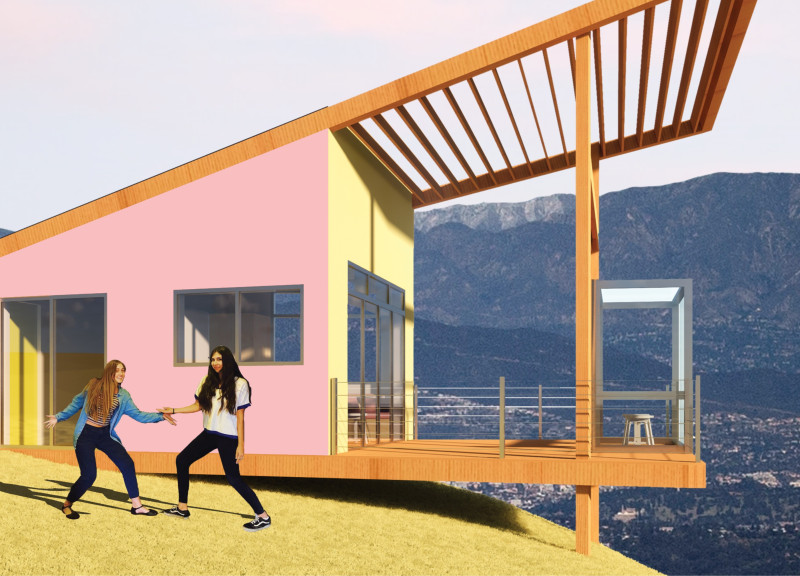5 key facts about this project
The Home Theater project addresses visibility issues within the film industry, especially regarding women and minority voices. It is located in a rapidly changing neighborhood of Los Angeles and functions as both a home and a workspace for two female screenwriters. The design is centered on the idea of elevation, reflecting both a physical and symbolic ascent that allows the narratives of its inhabitants to reach the surrounding community.
Architecture Concept
The design places the home atop a hill, providing a clear vantage point. This positioning is intentional, symbolizing the rise of marginalized voices in an industry that often overlooks them. By elevating the structure, visibility is not just a physical characteristic; it represents the aspiration and determination of its residents to share their stories and perspectives with others.
Functionality and Adaptability
The layout of the Home Theater emphasizes flexibility. The spaces inside are designed to serve multiple purposes, allowing for creative workshops and public engagement over traditional living functions. This adaptability enhances the role of the home, bridging the gap between private life and creative community interaction, nurturing connections between the inhabitants and their audience.
Social Commentary
Embedded in the design is a reflection on the broader challenges faced in the film industry. The home stands not only as a residence but also as a commentary on the importance of representation. Its geographical context in a rapidly evolving urban area adds depth to its message, urging ongoing conversations about gender and access in creative fields.
The open balconies extend outward, creating opportunities for interaction. They invite residents and visitors to engage with the artistic expressions shared within. This thoughtful detail strengthens the connection between the home and its environment, reinforcing the commitment to visibility and representation in both architecture and the arts.






















































